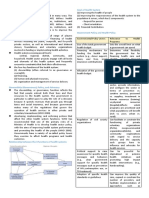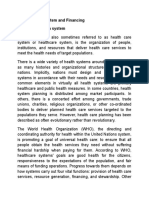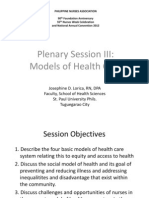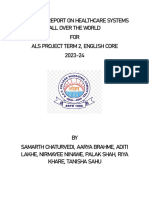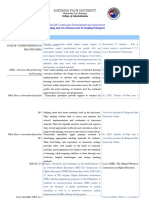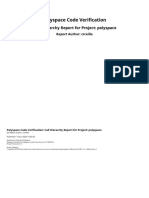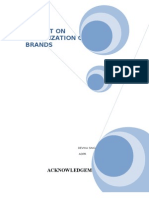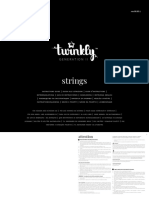0% found this document useful (0 votes)
9 views42 pagesHealth System and UHC
The document discusses the definition, functions, and objectives of health systems as outlined by the WHO, emphasizing the importance of universal health coverage (UHC) as a fundamental human right. It highlights various health financing models, the significance of equity, quality, and financial protection in healthcare, and the need for effective governance and ethical commitment to achieve UHC. Additionally, it examines the disparities between the Global North and South and presents Cuba's healthcare system as a model for accessible and equitable health services.
Uploaded by
Mohamed AburomanCopyright
© © All Rights Reserved
We take content rights seriously. If you suspect this is your content, claim it here.
Available Formats
Download as PDF, TXT or read online on Scribd
0% found this document useful (0 votes)
9 views42 pagesHealth System and UHC
The document discusses the definition, functions, and objectives of health systems as outlined by the WHO, emphasizing the importance of universal health coverage (UHC) as a fundamental human right. It highlights various health financing models, the significance of equity, quality, and financial protection in healthcare, and the need for effective governance and ethical commitment to achieve UHC. Additionally, it examines the disparities between the Global North and South and presents Cuba's healthcare system as a model for accessible and equitable health services.
Uploaded by
Mohamed AburomanCopyright
© © All Rights Reserved
We take content rights seriously. If you suspect this is your content, claim it here.
Available Formats
Download as PDF, TXT or read online on Scribd
/ 42




